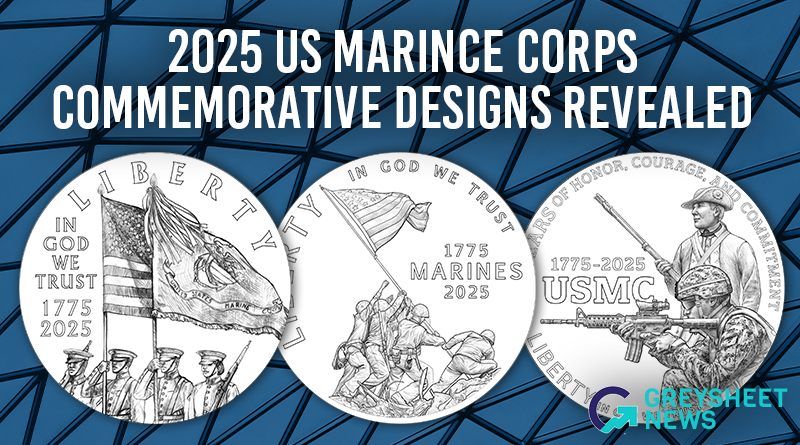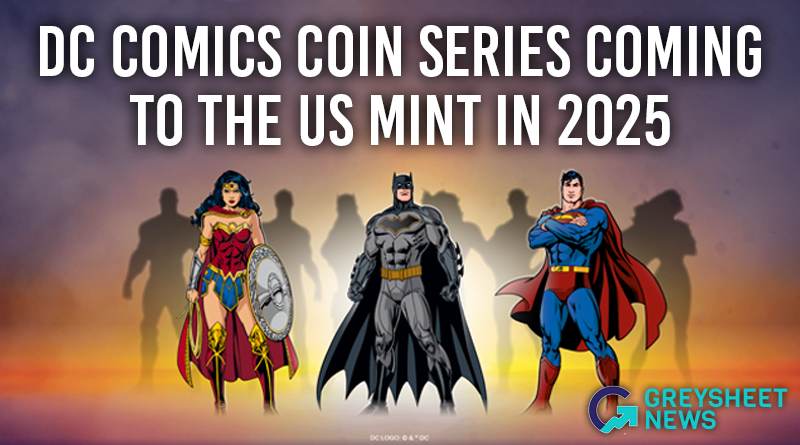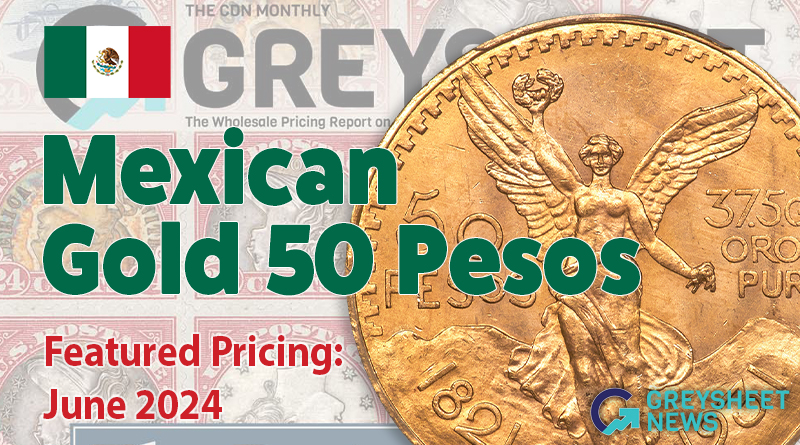Climbing a Mountain Blindfolded: How the 2021 Morgan and Peace Dollars came to Be
After months of delays, an amendment was inserted, and that bill was back on track a couple hours later. We had our Morgan and Peace silver dollars, and the rest is history!
by Michael Moran, Contributor
I remember that day clearly. It was Christmastime 2018 when I picked up the phone and called my friend and fellow numismatist, retired Louisiana Congressman Jimmy Hayes. Tom Uram, CCAC Chairman and now ANA President, and I were partnering on an effort to coin Morgan and Peace Dollars in 2021, the 100th anniversary of the changeover of these two designs on our silver dollar. I would have to deal with Congress and I wanted Jimmy’s help.
As we talked, a tornado-warning siren screamed in the background through Jimmy’s phone. At the time, I did not understand the analogy, but Jimmy knew I was headed into stormy weather. He would be “of counsel” going forward.
The 116th Congress convened on Jan. 3, 2019. It took Tom until early March to get a meeting for the two of us with Mint Director David Ryder. Without the Mint’s approval, this project was going nowhere. Our plan was to introduce legislation authorizing the two silver dollars as commemorative coins for 2021. By rule, Congress limits commemorative coin legislation. If two programs received approval in front of us, we were dead in the water.
The meeting with Ryder went well; he gave us the green light while reminding us that the mint was prohibited by law from lobbying Congress. After the meeting, I texted my congressman, Andy Barr, and asked for a meeting. He could give me 10 minutes that afternoon.
I carried in my pocket an 1878 Morgan Dollar from the Carson City Mint and a high-relief Peace Dollar. I showed them to Andy as I pitched the legislation. He was all in but there was a problem. The Democrats had won control of the House in the mid-term elections. Andy, a Kentucky Republican, was no longer on the subcommittee with mint oversight. However, he knew Rep. Emanuel Cleaver, the new chair and a Democrat. Support was forthcoming.
Next came the drafting of the bill and decisions regarding allocations to charitable organizations. Tom pushed for the ANA. I added the World War I Museum, located in Rep. Cleaver’s Kansas City, Mo., district. Then we received feedback that Director Ryder wanted to involve the Carson City Mint Museum. As part of that package, Congressman Mark Amodei, representing the Nevada district where the museum is situated, came on board. All this stretched into June. By then several other commemorative coin proposals were well out in front of us.
It takes 290 co-sponsors to release a commemorative coin bill from committee for a House vote. We finally got all the necessary sign-offs and the bill was introduced on July 16, 2019. Tom and I were two people, without an organization behind us to get the needed endorsements. Working with Andy, we were able to gain some endorsements but not nearly enough. As a contingency, I asked mint staff to draft a bill that simply authorized the coinage of the Morgan and Peace Dollar.
By Christmas, two other commemorative coin bills had passed the House and Senate. Andy asked for a meeting at my home. Three hours later, he was on board to push for a simple authorization to coin the two silver dollars. His only stipulation was that Director Ryder must commit to the project. After the first of the year, the decision was made to draft a new bill, with one key change: there would be no termination in the authority to strike the dollar coins.
As the time neared to introduce this revised legislation, COVID hit and the federal government went remote. Still, Ryder was optimistic about the silver dollar legislation. The mint had performed the required economic evaluation of the new bill with very positive results. He scheduled a meeting with Treasury Secretary Steven Mnuchin to seek Treasury support. The bill, H.R.6192, was introduced on March 11.
In April Director Ryder remained optimistic. With the government in lockdown and travel for Tom and me very restricted, I failed to understand Ryder’s positive attitude. Only later did I realize it dealt with the imminent runoff of the America the Beautiful Quarter program. Our silver dollars seemed to be the pack mule for the mint’s replacement quarter program. However, the bad news was that Congress had adjourned due to COVID.
After Congress reconvened, an effort was geared up to find a senator to introduce a companion bill in that chamber. We hit a brick wall. On June 2 I kicked it up a notch, calling Jimmy Hayes. He told me to have somebody get in touch with Sen. Mike Enzi of Wyoming. Though the senator was retiring at the end of this Congress, his involvement with the Sacagawea Dollar legislation might make him favorable to these silver dollars as well. Quickly a meeting was arranged. Enzi’s staff came on board; they believed it to be a good bill.
On Monday, July 23, the logjam broke both in the House and Senate. The mint’s strategy now became clear. H.R.6192 had been paired with Democratic Rep. Barbara Lee’s H.R.1923, Women’s History and Nineteenth Amendment Centennial Quarter Dollar Coin Program. The two bills, one Democratic and one Republican, would be brought up for unanimous consent together and passed the following Monday.
Under the Lee bill, now revised, there would be quarters through 2025 depicting prominent American women. Provisions were made to celebrate the nation’s semi-quincentennial on our circulating coins in 2026. A final series of quarters and half dollars in 2027-30 would honor American youth sports and the Paralympics. Sen. Catherine Cortez Masto had been one of two Democrats to introduce a companion bill to Rep. Lee’s original legislation. Now Masto would be the Democrat with Enzi on Senate companion bill S.4326 for the silver dollars.
On the day appointed to seek unanimous consent, the two bills were pulled from the House agenda. Recent changes in the Lee bill had caused revenue projection issues. Without knowledge of the exact workings, I understood enough to know that H.R.6192 was stalled until these issues were fixed and probably would not make the House agenda again until after Labor Day. The real problem was that the Congressional Budget Office, which evaluated all the bills for financial impact, was wrapped up with scoring proposals for another round of COVID stimulus.
Still, Director Ryder was positive that the legislation was going to happen. He was pushing or perhaps shoving as hard as he legally could. The bill finally passed the House on Sept. 23. But the time lost in the House now compressed the time available for passage in the Senate. This Congress was scheduled to adjourn on Dec. 17, 2020. S.4326 must pass the Senate by adjournment or we were dead.
The following Monday, I learned from Enzi’s office that we had a tall order in front of us. We needed 67 co-sponsors to get S.4326 out of the Committee on Banking, Housing and Urban Affairs and up for a vote. Tom and I went to work. Both of us knew Donald Scarinci, who was a good friend of Sen. Robert Menendez of New Jersey. We needed a veteran Democrat to support Enzi’s bill. Donald got him for us in late October.
The other key to our efforts was Sen. Pat Toomey of Pennsylvania. Toomey had been negative; he did not support coin bills. When he questioned why Tom was approaching him, Tom’s answer was to the point: the Philadelphia Mint. Toomey softened his stance and Tom closed the conversation by giving him an almost uncirculated 1921 Morgan Silver Dollar. The coin’s value being under gift restrictions for Congressmen, Toomey put it in his pocket.
On Oct. 26 Tom’s hard work came to fruition, Toomey agreed to co-sponsor the bill. We now had two key members from the Committee on Banking, Housing and Urban Affairs on board. Yet nothing happened; all eyes were on the looming presidential election. The election came and went. When President Trump failed to concede, the turmoil of the election simply continued unabated.
Now, with time too short to gain the necessary co-sponsors, we had to get the bill out of committee under unanimous consent rules. That came to a stop quickly. Sen. Mike Crapo, chair of the committee, refused to move the bill. He would only release the bill with the necessary co-sponsors.
Thanksgiving recess came and went. The waiting was tough for me. The first positive news came on Dec. 4. Sen. Enzi had convinced Sen. Crapo to co-sponsor the bill. Yet nothing had really changed; we still needed the 67 co-sponsors. It was now two weeks until Congress closed its doors for good.
On Dec. 7, Enzi’s office held a conference call with Tom and me. Enzi had convinced Sen. Crapo to allow a hotline. That means the original House bill is brought up in a “cloakroom meeting” held separately by both political parties. These cloakrooms are where the Senators hang out when not required on the floor. If no holds are placed by any senator, then the bill is cleared for consideration by the whole Senate, to be passed under unanimous consent. These holds can be arbitrary and capricious, even vicious. I was well aware of the Peace Dollar’s initial fate in 1921.
I held my breath into the weekend. Monday of the last week the Senate was scheduled to be in session came and went with nothing. We had only until Friday to get this bill on the floor. There was nothing Tuesday and Wednesday. On Thursday, I did not ask for an update from Enzi’s office. It was better to pretend I was an ostrich and stick my head into the sand. Suddenly, a senator placed a hold on the companion Lee bill. An amendment was inserted, and that bill was back on track a couple hours later.
The text came Thursday, Dec. 17, at 7:30 pm. The bill had passed. It had only taken 52 seconds during the day’s wrap-up. On Jan. 5, 2021 President Trump signed the bill. It was now officially known as Public Law 116-286.
We had our Morgan and Peace silver dollars, and the rest is history!
ABOUT THE AUTHOR
Michael F. Moran is a life-long businessman, numismatic enthusiast, and award-winning author. Appointed by Senator Mitch McConnell, Michael has served three terms on the U.S. Mint Citizens Coinage Advisory Committee (CCAC) and he published two books: “Striking Change” (2008, Whitman Publishing) and “1849: The Philadelphia Strikes Gold” (2016, Whitman Publishing). His third book titled “When Coins were King” will be published by Whitman later this year.
editors note: you can learn more about the values of 2021 Morgan and Peace dollars here.

Download the Greysheet app for access to pricing, news, events and your subscriptions.
Subscribe Now.

Subscribe to CPG® Coin & Currency Market Review for the industry's most respected pricing and to read more articles just like this.
Source: CDN Publishing












Please sign in or register to leave a comment.
Your identity will be restricted to first name/last initial, or a user ID you create.
Comment
Comments